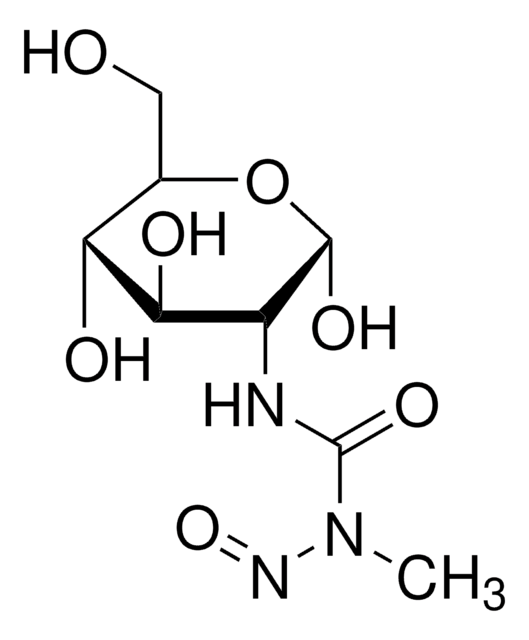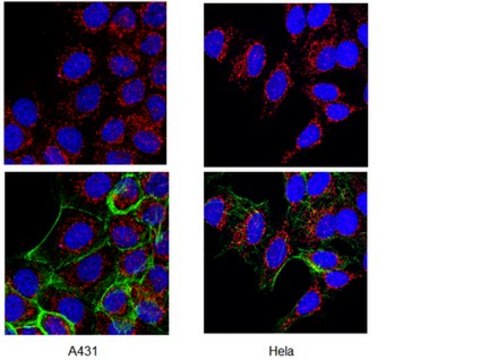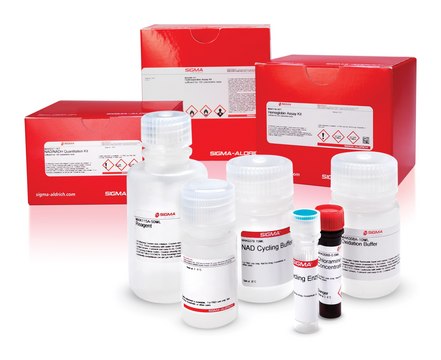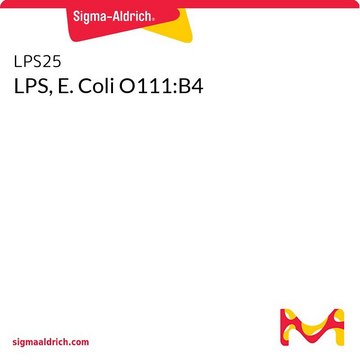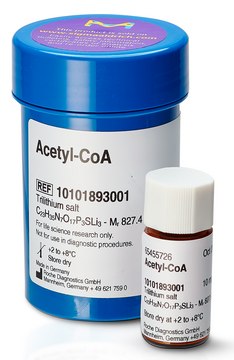A6986
Acetyl-CoA Carboxylase 1 human
recombinant, expressed in Sf9 cells
Synonyme(s) :
ACAC, ACACA, ACC, ACC1, ACCA, acetyl-CoA carboxylase alpha
Se connecterpour consulter vos tarifs contractuels et ceux de votre entreprise/organisme
About This Item
Produits recommandés
Description générale
Acetyl-CoA Carboxylase 1 (ACACA) is mapped to human chromosome 17q12. It is majorly expressed in liver and adipose tissue. ACACA has biotin carboxylase (BC), biotin carboxyl carrier protein (BCCP) and carboxyl transferase (CT) domains and an additional interaction domain. (BT) A central domain region (CD) connects the BC and CT domains. ACACA is a key regulator of energy balance. The ACACA catalysis is the rate-limiting step in the synthesis of malonyl-CoA and regulation of free fatty acid oxidation. Elevated levels of ACACA contributes to obesity and tumor progression.
Formulation: Solution in Tris-HCl (pH 8), NaCl, Glycerol
Application
Useful for the study of enzyme kinetics, screening inhibitors, and selectivity profiling.
Actions biochimiques/physiologiques
Acetyl-CoA Carboxylase (ACC) catalyzes the formation of Malonyl CoA through the irreversible carboxylation of acetyl CoA. ACC is activated by citrate, glutamate, and dicarboxylic acids and negatively regulated by long- and short chain-fatty acyl-CoAs. ACC1 is essential for breast cancer and prostrate cancer cell survival.
Acetyl-CoA Carboxylase (ACC) regulates the metabolism of fatty acids. This enzyme catalzes the formation of Malonyl CoA through the irreversible carboxylation of acetyl CoA. There are two main isoforms of Acetyl-CoA carboxylase expressed in mammals, Acetyl-CoA carboxylase 1 (ACACA) and Acetyl-CoA carboxylase 2 (ACACB). ACACA has broad tissue distribution but is enriched in tissues critical for fatty acid sythesis such as adipose tissue. ACACB is enriched in tissues such as skeletal muscle and heart that are critical for fatty acid oxidation.
The Acetyl-CoA Carboxylase enzymes are activated by citrate, glutamate, and dicarboxylic acids and negatively regulated by long and short chain fatty acyl CoAs. Acetyl-CoA Carboxylase 1 is essential for breast cancer and prostrate cancer cell survival. Because of thier roles in fatty acid metabolism and oxidation, ACACA and ACACB are therapeutic targets for treating obesity and metabolic syndrome disorders.
The Acetyl-CoA Carboxylase enzymes are activated by citrate, glutamate, and dicarboxylic acids and negatively regulated by long and short chain fatty acyl CoAs. Acetyl-CoA Carboxylase 1 is essential for breast cancer and prostrate cancer cell survival. Because of thier roles in fatty acid metabolism and oxidation, ACACA and ACACB are therapeutic targets for treating obesity and metabolic syndrome disorders.
Propriétés physiques
α transcript variant 1, C-terminal histidine-tagged 270 kDa protein containing amino acids 1-2383 (end)
Définition de l'unité
One unit will cause the conversion of 1 picomole of ATP to ADP per minute at pH 7.4 at 30 °C
Notes préparatoires
Thaw on ice. Upon first thaw, briefly spin tube containing enzyme to recover full content of the tube. Aliquot enzyme into single use aliquots. Store remaining undiluted enzyme in aliquots at -70°C. Note: Enzyme is very sensitive to freeze/thaw cycles.
Code de la classe de stockage
12 - Non Combustible Liquids
Classe de danger pour l'eau (WGK)
WGK 1
Point d'éclair (°F)
Not applicable
Point d'éclair (°C)
Not applicable
Faites votre choix parmi les versions les plus récentes :
Certificats d'analyse (COA)
Lot/Batch Number
Vous ne trouvez pas la bonne version ?
Si vous avez besoin d'une version particulière, vous pouvez rechercher un certificat spécifique par le numéro de lot.
Déjà en possession de ce produit ?
Retrouvez la documentation relative aux produits que vous avez récemment achetés dans la Bibliothèque de documents.
Notre équipe de scientifiques dispose d'une expérience dans tous les secteurs de la recherche, notamment en sciences de la vie, science des matériaux, synthèse chimique, chromatographie, analyse et dans de nombreux autres domaines..
Contacter notre Service technique


